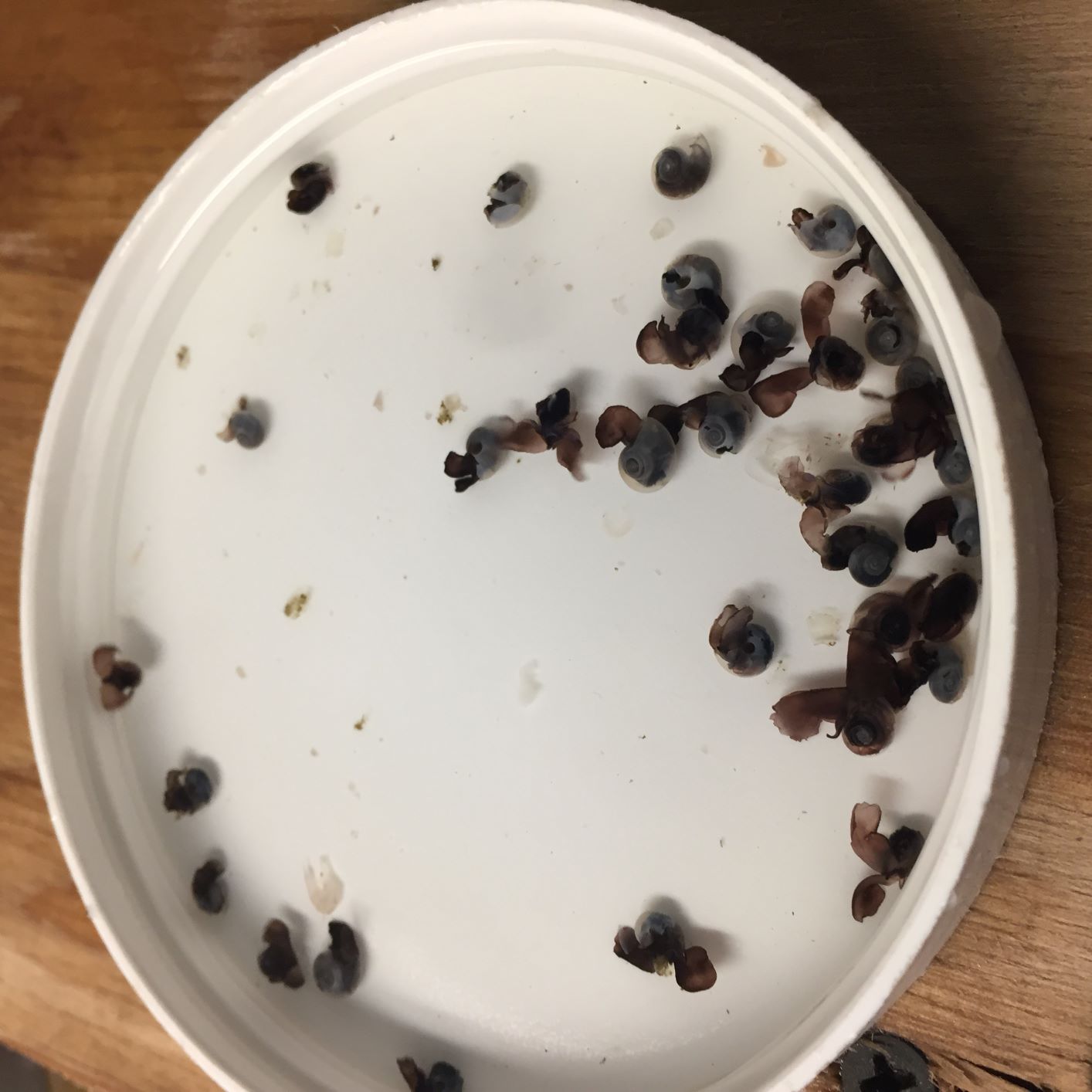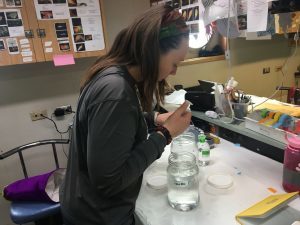Sea butterflies

January 25, 2019 (Note: this is #23 in a series of posts describing my NSF-sponsored fieldwork in Antarctica aboard the Laurence M. Gould). The featured image by Patricia Thibodeau shows a bunch of pteropods…look to see the beautifully extended wings on a few in the lower corner.
While I’ve been developing increasing copepod-centric tunnel vision, we are zipping up and down the coast, inshore and offshore, through ice and ocean swell. Seals curiously watch our bright orange ship steam by, and we pop out of the labs and away from the back deck every once in a while to take in the splendor. While Antarctica is passing by all around me, I’m also surrounded by a “sea” of different research projects. My shipboard lab-mate Patricia (“Tricia”) Thibodeau is Ph.D. student in Debbie Steinberg’s lab at VIMS. She plays an important role in collecting and processing the zooplankton tows, but she’s also fitting in her own experiments to study the metabolism of the pteropod Limacina helicina antarctica. Pteropods, sometimes called “sea butterflies, are marine animals related to snails. But unlike the humble snails, they spend their whole life swimming around in the water column . They are beautiful to watch as their “wings” undulate and “flap” through the water. Many pteropods form delicate shells out of aragonite, a form of calcium carbonate that is particularly sensitive to ocean acidification. [My lab has also done some work on pteropod physiology…see papers by Thabet et al. and Maas et al. here].

Tricia preparing to measure pteropod respiration in the lab.
Antarctic pteropods could be particularly vulnerable to environmental changes. Along with ocean acidification, they are facing the same warming temperatures that have already been shown to cause significant southward range contraction of the Antarctic krill. Effects of climate change can be complex, and manipulative experiments are a valuable approach to understanding how different types of animals might respond. For example, changes in temperature are related to changes in ice cover, which can in turn affect the light and nutrients available to algae: food for many animals, including some pteropods. In her “spare time” Tricia is conducting experiments to test how differences in food and temperature affect pteropod metabolism. She is incubating the pteropods under different conditions and measuring their rates of feeding, respiration and excretion. Her Ph.D. research has already provided insights into pteropod ecology. Analyzing over 20 years of data, she has found that changes in Limacina abundance are strongly associated with multi-year ocean circulation patterns (the ENSO index) but have not (yet?) shown overall changes in abundance, such as might be predicted with acidification and warming. As for what we might see in the future, Tricia’s experiments are one of the best ways to get a glimpse.